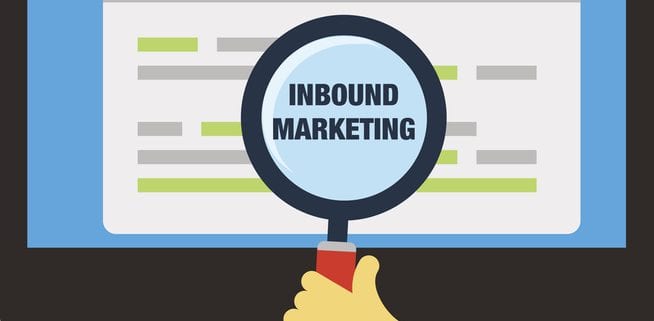
6 Reasons Why Your Business Needs B2B Inbound Marketing
There are many B2B companies that continue to advertise using more traditional methods, such as TV commercials, magazine ads, cold calls, and more. While traditional marketing can be effective, it’s a good idea to implement a variety of different marketing strategies. This includes inbound marketing. The main difference between inbound marketing and traditional marketing (often referred to as outbound marketing) is that with inbound marketing you’re putting yourself in the position to be found by prospects, whereas with outbound marketing, the goal is to find prospects and to advertise to them directly. If you haven’t implemented an inbound marketing B2B strategy yet, the following are six reasons to do so:
1. Increase Brand Awareness
As any company knows, increasing brand awareness is critical to growing your business. Inbound marketing provides numerous opportunities to generate awareness for your brand. Having a website that you post content to that’s optimized for SEO (search engine optimization) will help to increase your company’s page rankings on Google, thereby increasing exposure to Google’s users. Establishing a social media presence will help you engage with followers, who will then share, like, or comment on the content you post to social media, which helps drive exposure even further. Inbound marketing also tends to have a snowball effect when it comes to brand awareness. The more you continue to create content and post, the more awareness of your brand will increase.
2. Build Brand Authority
While generating brand awareness is certainly important, you will also want to build the reputation of your brand as a company that clients can trust and depend on. Inbound marketing can achieve is in many ways. First of all, by creating relevant content that addresses the needs of your target audience, you help to build authority within your industry. The more authority you have, the more trusted you will be. You can also generate authority by engaging with followers on social media, such as by addressing questions and participating in relevant discussions.
3. Generate More Leads
Without leads you cannot generate sales. Inbound marketing encompasses a variety of different tactics that can help you generate more leads. These tactics include SEO, content marketing, social media marketing, and email marketing. Effective inbound marketing strategies are capable of generating high-quality traffic to your website and ensuring that the content that’s available on your website will help to nurture visitors through the buyer’s journey, enabling you to convert your leads and eventually turn them into customers.
4. Educate Your Prospects
The more a prospect knows about their own needs and challenges as well as the solutions that will best address those needs and challenges, the more likely they will consider the product or service that you have to offer. Inbound marketing gives you the opportunity to create content that will educate prospects at every stage of the buyer’s journey. The idea is to let your prospects find the information that you offer and educate themselves at their own pace. This way, they do not feel the pressure to purchase until they are ready to choose a solution. The ability to educate your prospects will not only help get you closer to a sale, but it will also build your brand authority.
Similar Article: Top 3 Ways to Maximize Your Inbound Marketing Strategy
5. Improve Understanding Of Your Audience
You can learn a lot about your audience via inbound marketing. For example, you can gather information on prospects and customers through your opt-in forms, through questionnaires and surveys, through social media engagement, and by tracking their online behavior. You can use this information to better understand who your customers are and what their needs, goals, and challenges are. As a result, you’ll be able to develop buyer personas that you can then use to more effectively target your inbound marketing efforts.
6. Increase Long-Term ROI
Even if you run very successful outbound marketing strategies, there will always be one major drawback: more traditional marketing efforts tend to be short-term strategies. This means that once a campaign has finished, you’ll have a good idea of what the ROI was for that campaign. The thing about inbound marketing B2B strategies is that they are long-term. Even if the ROI seems low at first, it will grow over time as you adjust and improve your tactics. For example, the content you post to your website will live there forever. Which means it can have an impact years after it’s been published.
Inbound marketing has often been touted as essential for B2C companies, but it can be just as beneficial for B2B companies if properly implemented. These are six reasons why you should implement an inbound marketing B2B strategy. And once you do, you’ll realize that there are many other benefits over the long run as well.















 ry day.
ry day.

 What is Cornerstone Content?
What is Cornerstone Content?



 Improving The Customer Experience
Improving The Customer Experience
 A lot of companies have social media pages, but they don’t do anything with them. Use your social pages to your advantage. Link new content to your social pages. Encourage conversations about your brand or your industry by asking your followers questions. Contribute to conversations that are relevant to your brand. By engaging with your followers, you build brand trust.
A lot of companies have social media pages, but they don’t do anything with them. Use your social pages to your advantage. Link new content to your social pages. Encourage conversations about your brand or your industry by asking your followers questions. Contribute to conversations that are relevant to your brand. By engaging with your followers, you build brand trust.
